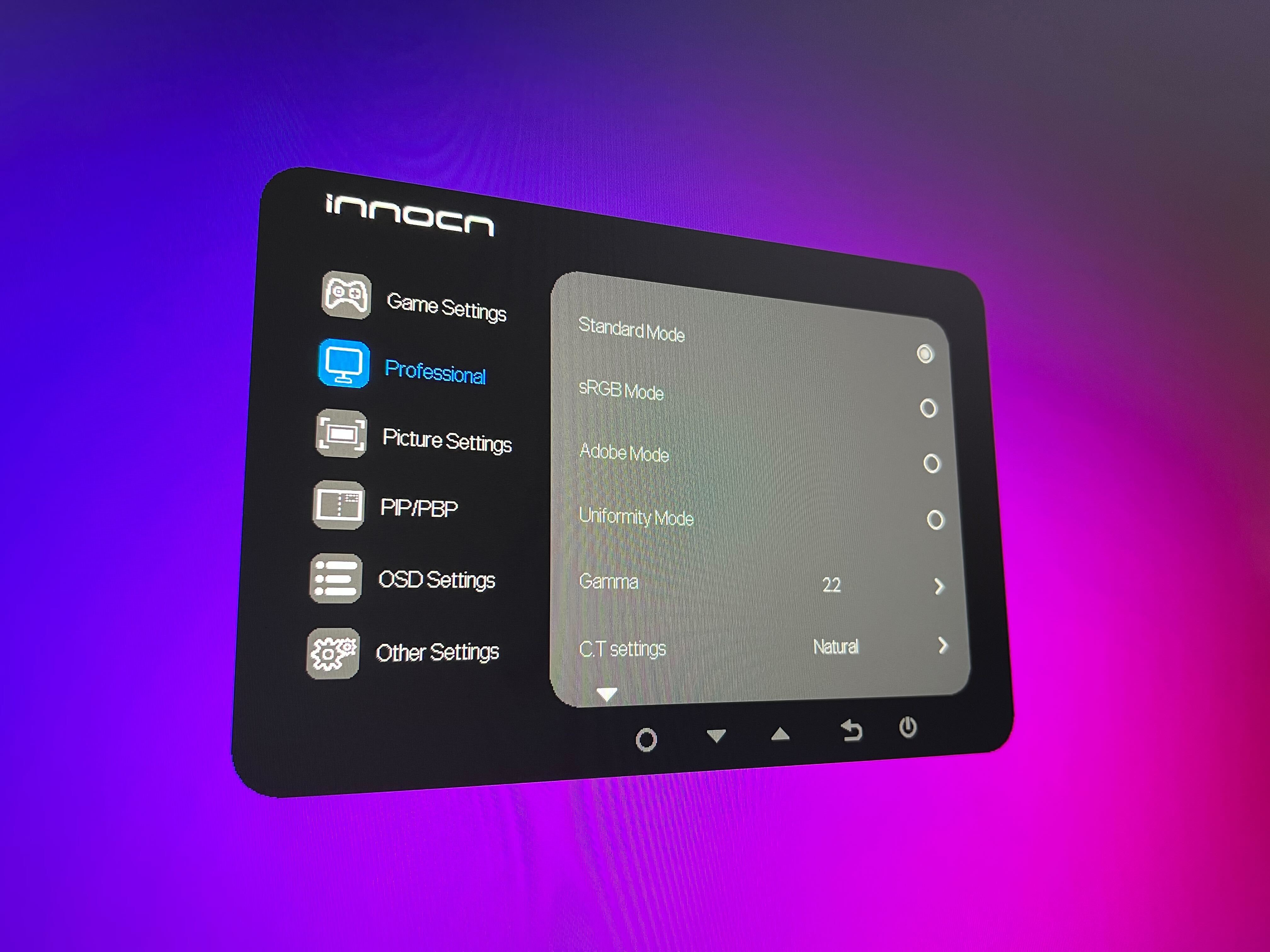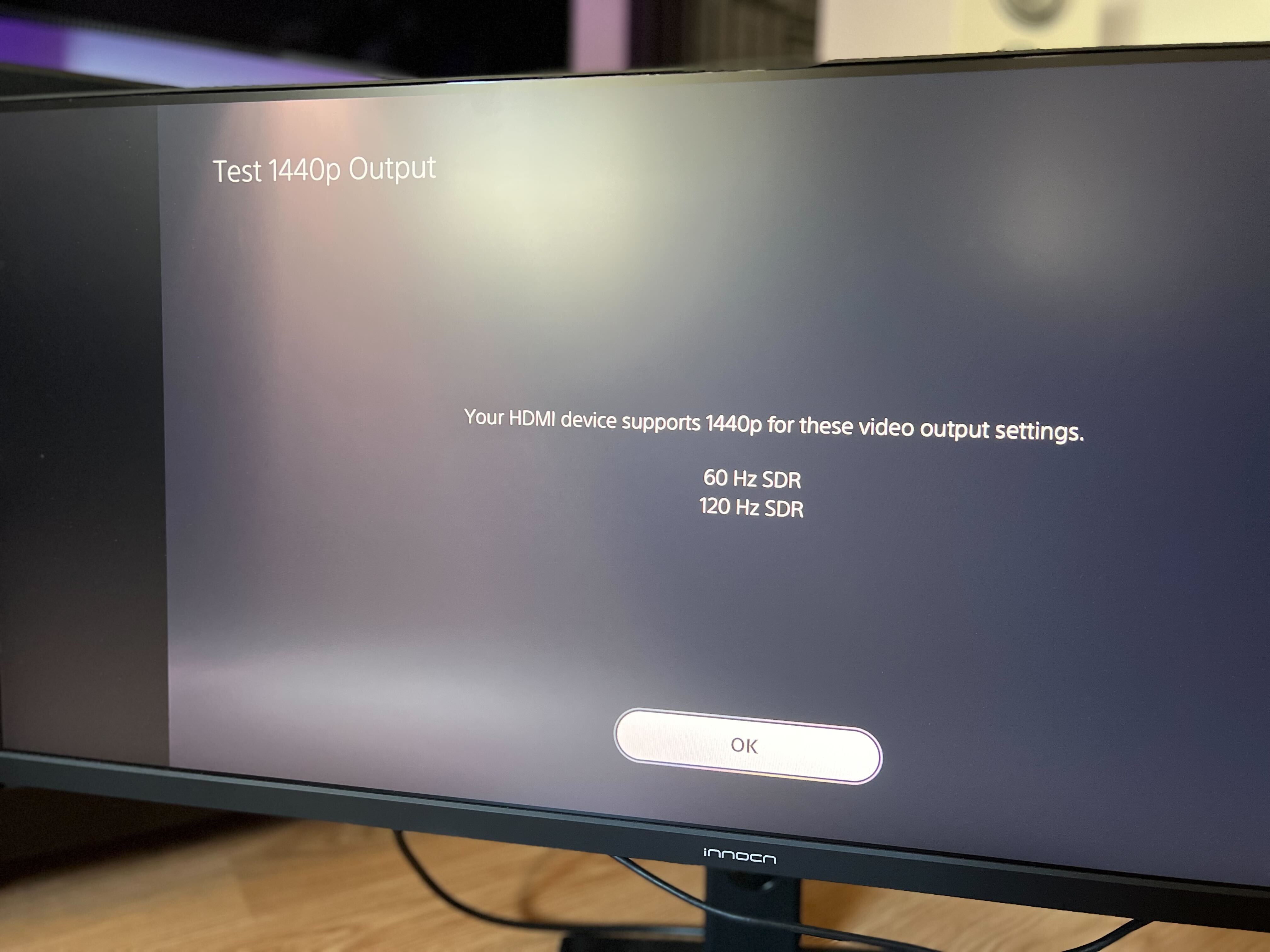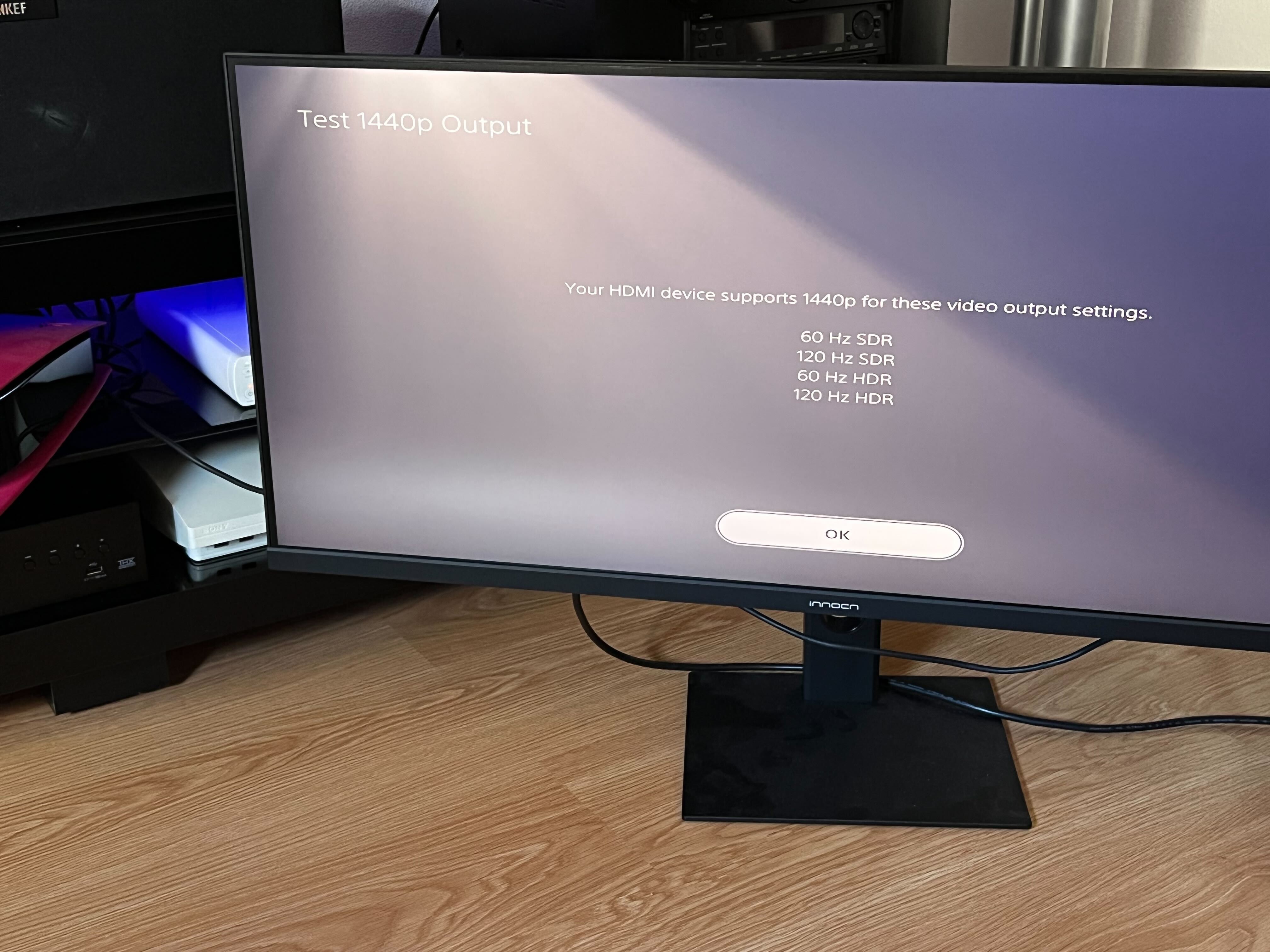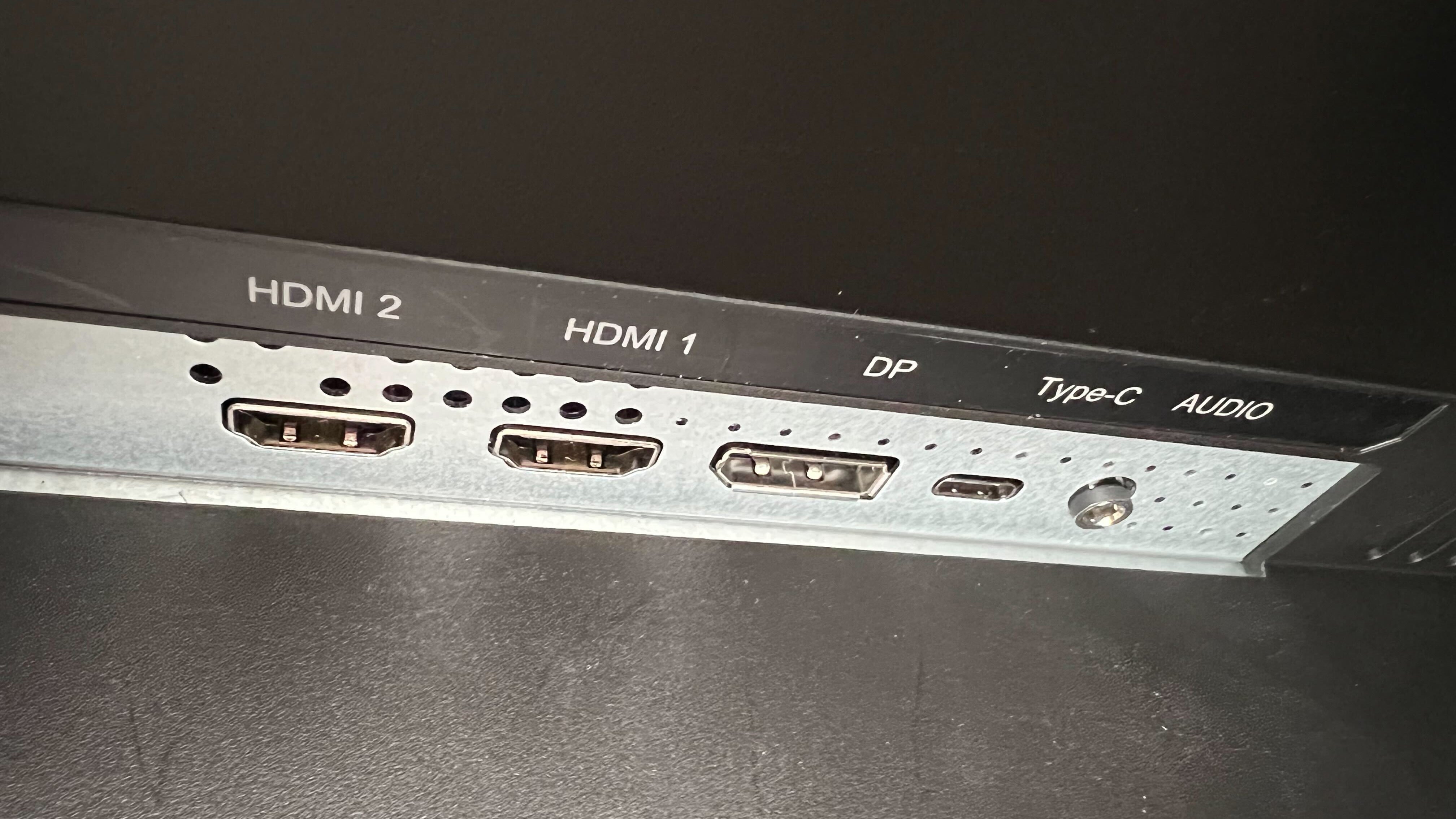The Innocn 40C1R is a 40-inch ultrawide monitor with an IPS-style panel, AMD Freesync Premium and a 144Hz refresh rate – all standard stuff, right? What makes this monitor unique though is its form factor: the 40C1R is completely flat, making it a tempting alternative for folks that don’t appreciate the curved screens endemic amongst modern ultrawides. You don’t pay a premium for this either, with the 40C1R being surprisingly affordable given its titanic proportions: $600 is the list price, with the price dipping to $480 or less during sales.
I first ran into Innocn earlier this year, when I sampled one of their portable OLED monitors – which I felt delivered a nice combination of portability and image quality with all the benefits of OLED technology. The 40C1R is not an OLED display and I’m not a huge fan of LCD technology, so I was skeptical, but I figured I’d see how it stacks up against my own similarly-sized LG 38GN950 monitor and whether it’s a suitable choice for PC gamers looking for a sizable panel at a decent price.
Once you unbox the 40C1R, the first thing that stands out is the understated design. Devoid of the typical ostentatious gaming-oriented elements so common in PC monitors, the 40C1R is restrained with a modest, thin black bezel, a clean rectangular stand and a small lip running along the bottom of the frame housing the controls. It’s a nice-looking monitor that’ll look good on just about any desk – well, any desk that can handle its girth, at least.


The back panel includes multiple inputs tucked up beneath the chassis: a pair of HDMI 2.0 inputs (max 3440×1440 at 100Hz), a DisplayPort 1.4 connector (3440×1440 at 144Hz), a USB-C port which allows video input (max 60Hz) and a 3.5mm audio jack. The rear of the panel is otherwise empty with a 100×100 VESA mount if you prefer to mount your monitors on an arm. The included stand allows height and tilt adjustment and is equally understated – just a heavy square slab that complements the monitor’s design.
The menu system is reasonably robust with options for adjusting response time, enabling Adaptive Sync, adjusting the picture settings and enabling features such as a refresh rate monitor and a crosshair overlay. Menu navigation is handled via a collection of four buttons along the bottom side of the monitor bezel – it’s functional if not especially intuitive compared to the micro-stick on my LG monitor. Once configured properly, however, you shouldn’t need to spend much time adjusting settings – something we’ll discuss shortly.
What really sets this monitor apart from the usual offering, however, is its size and form factor. The 40C1R is completely flat and comes in at 40 inches, making it one unusual display. Most ultrawide monitors opt for a gentle curve to better focus the eyes but Innocn instead uses a completely flat IPS ADS panel in this monitor. Whether this works for you will depend on your viewing distance – on a larger desk, the presence is welcome but if you prefer to sit closer to your monitor, its size may feel overwhelming. This is an important point to keep in mind when monitor shopping.
The big question then is one of performance and there are several key areas which I define the quality of the panel – resolution, motion clarity, panel brightness, color accuracy and contrast.
Let’s start with the choice of resolution which, in this case, is 3440×1440. This is a common choice typically featured in 34-inch ultrawide monitors but when expanded to 40 inches the pixel density does feel slightly inadequate for desktop use. This monitor delivers a pixel density of roughly 93 pixels per inch – equivalent to a 32-inch 16:9 1440p monitor. You’ll find that most modern PC games support this resolution, while the reduced pixel count versus 4K makes it far easier for even a mid-range GPU to drive it. In that sense, while I prefer a higher resolution for productivity, 3440×1440 could be considered a sweet spot when it comes to PC gaming.


Upon firing up the monitor for the first time, I recommend immediately opening the settings and making changes. The default gamma curve and color temperature are both higher than I’d recommend with a cold color temperature and overly darkened colors. First impressions weren’t especially positive, but you can never judge a monitor by its default settings. It is possible to run a full calibration, if you have the hardware, but the sRGB option available under the ‘professional’ menu produces a much-improved image right away. The gamma curve is now more accurate and color temperature less cold, closer to the D65 white point.
Brightness-wise, the default SRGB mode produces a measured 231 nits but increasing the brightness slider to 100 on a full white background raises this to a maximum of ~380 nits. I conducted measurements using an X-Rite i1Display Pro, by the way. The panel is more than bright enough for SDR content and desktop usage, and while perhaps not quite as vibrant as my LG 38GN950, it’s surprisingly close overall with reasonable contrast and strong color reproduction. Unfortunately, this does present a problem for HDR, as the monitor’s rated 400 nits of HDR brightness and lack of local dimming means it doesn’t deliver impactful HDR – I recommend sticking to SDR instead.
Crucially, horizontal viewing angles are adequate with relatively even brightness and color reproduction in the corners of the image while viewed head-on. This is critical for a large edge-lit panel such as the 40C1R but there is one caveat – vertical brightness shift is evident to some degree. While not an issue if the height is properly adjusted for your setup, you may notice this when viewing from slightly above or below the monitor’s center point.
Overall, though, image quality is impressive when considering the underlying technology and price point. A large format monitor capable of superior image quality fetches a not-insignificant premium over the 40C1R.
Next up, let’s talk about gaming performance and resolution support which is, of course, the primary reason for selecting a monitor like this. Using DisplayPort, the monitor allows up to 144Hz refresh rate at 3440×1440, but the monitor also supports down-sampling from higher resolutions. If you select full 3840×2160 at 120Hz, for instance, the monitor can display this resolution in a proper 16:9 downsampled window. Using the native pixel grid, this means the 40C1R can become a 32-inch 1440p monitor if your input source does not support ultra-wide resolutions.


More importantly, this monitor supports up to 2560×1440 120Hz over HDMI which is useful for Xbox Series X and PS5; the latter worked fine at 1440p60 and 1440p120 in both SDR and HDR. Weirdly though, the monitor may stretch the image to fill the 21:9 panel resulting in an improper aspect ratio. Dig into the options menu and you’ll find the aspect ratio adjustment option is grayed out – and to fix this you need to disable Adaptive Sync in the monitor’s menu, which restores the proper 16:9 aspect ratio with black bars to the left and right. This is frustrating if you intend to use this display with a game console, as both Series X and PS5 now support VRR and it can be a godsend in some games.
In terms of motion clarity, this panel exhibits the typical persistence motion blur evident in all sample-and-hold displays. Within the menu, there are four options dedicated to response time – off, normal, fast and ultra-fast. In my testing, however, I found the difference between them somewhat negligible. Overshoot isn’t a huge issue even in ultra-fast but motion clarity is still limited. That said, the actual pixel response time is plenty quick and comparable to other LCDs, it should be noted, so it’s no worse in that regard next to the competition. My main issue is that there’s no motion blur reduction technology available at all. Strobing or black frame insertion would have saved the day in this instance, but it is unavailable. At higher frame-rates this is perhaps less of an issue but it’s the one big caveat. Of course, my LG monitor also lacks this feature, and it seems to be relatively rare on large format PC displays, which is a shame. Thankfully, you still get a responsive gaming experience thanks to the monitor’s low input latency, which I measured at a very resaonable 8ms at 60Hz. I tested this using the Black Dog Technology Time Sleuth Display Lag Tester which relies on HDMI output, but Display Port seems to produce comparable results based on sampling the same content over both HDMI and Display Port.

Lastly, this monitor also offers video input over USB-C, which is welcome, but this comes with its own catch – the monitor is limited to 60Hz over USB-C. I also tested the various picture-in-picture modes, which allow you to input two sources simultaneously and divide up the screen to your liking. Theoretically, you could connect two game consoles and enjoy some split-screen action in games that normally lack this option, and of course the ultrawide format makes this quite feasible.
It’s tough to argue with a monitor like the 40C1R at least as far as value proposition is concerned. The large format design, feature set and overall picture quality are impressive when you consider the current $480 price. For most users in search of a larger monitor, this is a fantastic option and one that I can wholeheartedly recommend. Most of my issues with the display are a problem inherent with LCD technology but it’s not as if there are many other options on the market. For most users, however, the 40C1R is a solid choice that is perfect for a powerful gaming PC and still excellent for modern game consoles. Definitely worth a look!
Be the first to comment